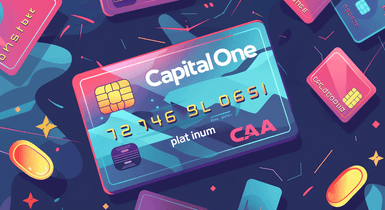Firestone Credit Card: A Comprehensive Guide

Do you find yourself spending a lot on car repairs, fuel, and other automotive purchases? If this is the case, having a credit card that will earn you rewards on these categories might be a great idea. One such option is the Firestone credit card, which is best suited for the brand’s regulars but also comes with additional benefits when shopping elsewhere.
Keep reading to learn all about Firestone card benefits, reward programs, and some drawbacks to watch out for.
Understanding the Firestone Credit Card
Firestone has two CFNA credit card options—a store-branded card, which can only be used at the brand’s points of sale, partner locations, and other participating stores, and a Mastercard version, which can be used anywhere Mastercard is accepted. Both cards offer various rewards, have a dedicated mobile application, and provide no-annual-fee service.

To qualify for a Firestone card, you must meet the following requirements:
- Be over 18 years of age;
- Provide documentation of your annual income;
- Have a fair to good credit score (a standard requirement for most credit cards).
The issuer reviews the application and, based on the applicant’s credit history and creditworthiness, decides whether to approve it and which card to issue.
In practice, it is easier to obtain a private-label Firestone card—the requirements to qualify for one are far less stringent. As a cardholder, you can earn rewards on purchases and receive bonuses for payments at Firestone locations, which you can then convert into money and spend on car repair and maintenance. You can manage your account conveniently through the Firestone credit card payment app 24/7—you can check your balance, make payments, view your transaction history, and so on.
The Firestone card is instantly available, which makes it an excellent solution for urgent repairs, but this is far from the only advantage it offers.
The Firestone Credit Card’s Benefits

Firestone CFNA cards offer a variety of exclusive perks, especially when it comes to the brand’s products and services. The card offers the most benefits to frequent Firestone shoppers, so if you’re already a customer, you can save quite a lot of money without changing your spending habits.
New cardholders save 5% on their first purchase and earn up to 4% in rewards when they spend at Firestone locations. The Mastercard option provides some additional benefits: 2% cash back in rewards on other automotive purchases and 1% cash back anywhere you can pay with your Mastercard.
Perhaps the most interesting feature of the card is its six-month deferred interest offer, which is essentially an interest-free loan for up to half a year. The Firestone credit card also offers clients discounts, exclusive deals, and special coupons.
Both the store-branded Firestone card and the Firestone Mastercard version have their rewards divided into three levels. The cardholder’s tier is based on points earned and annual spendings.
- Passenger (level 1). Tier 1 cardholders spend less than $1,250 per year and earn 3% back in rewards at Firestone locations.
- Driver (level 2). Tier 2 cardholders spend between $1,250 and $2,499.99 per year and also earn 3% back but have access to holiday rewards and double-point events.
- Adventurer (level 3). Tier 3 cardholders spend over $2,500 per year and get 4% back in rewards, plus all the additional benefits from the previous tier.
While Firestone credit card benefits are quite valuable, the rewards system is complex, and sometimes, it makes more sense to consider alternative credit cards.
The Firestone Credit Card’s Drawbacks

Despite the good pack of benefits, Firestone cards come with certain limitations and disadvantages, such as above-average annual interest rates—a fixed annual rate of 34.99% (for the store-branded card) and a variable annual rate of 34.99% (for the Mastercard version). Potential cardholders should also consider the fees for missed or late payments (up to $41) and the inability to use private-label cards anywhere but at Firestone service points.
Overall, the Firestone credit card will not be a win-win solution for those who don’t visit the provider frequently. Such customers simply won’t receive enough benefits to cover the annual fees.
Additionally, rewards received under the program can only be used as a statement credit after spending at Firestone, so unless you plan to pay for expensive car repair or maintenance, you may consider other credit cards with less demanding terms and a more extensive rewards program.
Final Thought
In general, we can conclude that this card is a great option only for those who already spend a lot on car repairs and maintenance and are regular Firestone clients. For other car owners, this card is unlikely to be of value, and it would be more reasonable to consider alternative offers with more flexible, simpler, and more extensive reward options.
If you choose to go for a Firestone credit card, we suggest you use the Mastercard version.
FAQ
What is the interest rate for the Firestone credit card?
Although the Firestone credit card does not have an annual fee, it comes with a fairly high annual percentage rate—a fixed rate of 34.99% (for the store-branded card) and a variable rate of 34.99% (for the Mastercard version).
How do I apply for a Firestone credit card?
All you have to do is fill out the application on the website or submit it in person at the brand’s local office. Requirements from Firestone and CFNA include being over 18 years of age, providing documentation of annual income, and having a fair to good credit score.
What are tips for managing your Firestone credit card account online?
Having a registered account with CFNA, you can pay your Firestone credit card bills online. To avoid late payments and missed fee penalties, you can set up automatic payments through your account.




